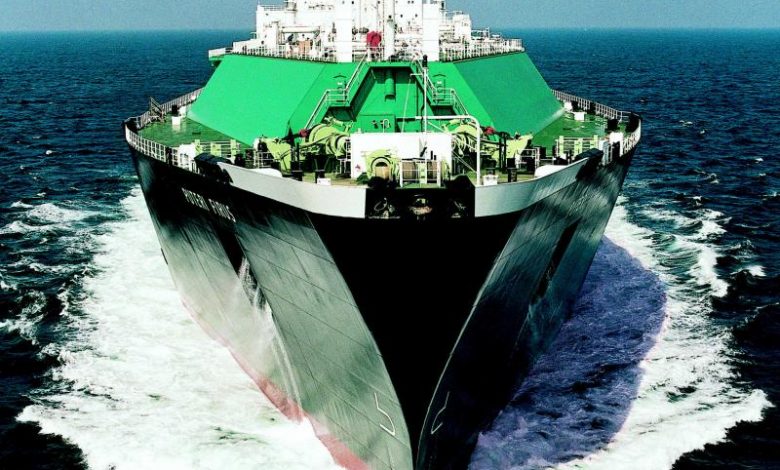Gas prospects finally burn bright

Chief correspondent Jason Jiang speaks with top LNG experts and sees hopeful prospects through to the end of the decade.
The LNG shipping market will see bright years ahead with more opportunities created by the growing output volume while the supply and demand picture looks more balanced with a slowdown in newbuilding orders. That’s the view of several leading analysts polled for this LNG feature, a feeling backed up by Splash readers who in an ongoing poll who pick out LNG as the best performing shipping sector for 2018.
Brokers Poten & Partners believe that LNG freight rates in 2018 will rise above levels seen in recent years after a period of low rates.
“LNG demand growth has been strong and is expected to remain so, especially in China, India and among new entrants to the global LNG market. This growth will require additional shipping capacity and will absorb some of the excess capacity, depressing rates in recent years,” says Jason Feer, global head of business intelligence of Poten & Partners.
Drewry Maritime Research expects LNG trade to grow by 7-8 % in 2018. Navin Thaker, a director at Drewry, says the growth in trade will be driven primarily by China, which is progressively inclining more towards cleaner fuel. Besides China, India will also support the growing demand for LNG.
“We expect India’s trade to grow in double digits. All other major imports will sustain their import level and may experience organic growth,” Thaker says.
Of concern for Thaker is the large number of LNG newbuilds delayed in 2017 that will add to a crowded delivery book this year. By Thaker’s count, there are set to be 69 new LNG carriers delivering in 2018
Talking about LNG shipping, Thaker believes the vessel slippages from the previous year will be a pressing factor to keep an eye on in the coming months.
According to Thaker, including the slippages, a total of 69 new vessels are scheduled to be delivered in 2018, the highest number of deliveries in more than a decade.
“However, there is a silver lining for shipowners,” Thaker maintains. “Theoretically, about 70.5m tonnes of additional capacity is scheduled to come online. Even taking a very conservative estimate we expect at least 50% of this capacity will be commissioned in 2018. This creates a lot of opportunity for vessels. Especially with LNG sale and purchase contracts getting flexible there will be opportunities for spot contracts for LNG vessels.”
Thaker is of the view that 2018 could be marginally better than 2017 for the LNG shipping, nevertheless, he points out that the biggest risk for LNG shipping will be how oil prices fare.
“Since most of the long-term LNG sale and purchase contracts are still linked to oil prices, better oil prices will provide a congenial environment for delayed liquefaction plants to come online. The state of LNG shipping hinges on commissioning of scheduled liquefaction projects,” Thaker says.
Paul Wogan, CEO of Gaslog, believes LNG shipping is at the start of a strong period of demand growth, driven by 80m tonnes of new LNG production due to come online through 2020.
“Much of this production growth will come from the US and as we expect Asian demand growth for LNG to remain robust we believe this will stimulate tonne mile demand. We therefore believe the next few years will prove to be a good time to be in LNG shipping,” says Wogan.
Golar LNG said in a recent note that the LNG shipping market recovery is underway while shipping demand has exceeded supply growth for the first time since 2013 and that demand growth has been supported by a combination of additional liquefaction volumes and rising ton miles.
“This upward trajectory should continue given that new 2018-2021 liquefaction will be dominated by US volumes. Looking to 2018, growth in ton miles is expected to further tighten the market and this sentiment is translating into a notable increase in enquiries for term charters,” the company stated.
Qatari LNG carrier operator Nakilat is also optimistic about the market outlook. The company expects spot rates to be volatile in the next 18-24 months due to the significant size of the current orderbook in 2018-19, and due to additional liquefaction capacity which is currently under construction.
“However, we expect LNG shipping charter rates to be strong by the end of 2019 due to the expected shortfall in LNG shipping supply resulting from the recent dearth in orders for new vessels,” Nakilat stated.
According to data by VesselsValue, the total LNG fleet currently stands at 584 vessels, out of which 480 ships are in service, 24 have been launched and 80 ships are on order.
Sveinung Stohle, president and CEO of Höegh LNG, is also of the view that the LNG carrier market will definitely be firmer in 2018 than in 2017.
“Spot market rates have more than doubled over the last two to three months, and this trend is set to continue, so we are very positive also to the LNG carrier market for 2018,” says Stohle.
“At the same time, the LNG carrier market must be careful not to replicate some of the other shipping segments, where a strong push in rates inevitably causes shipowners to order newbuilds, which we already have seen in the new year, and that may dampen the market sentiment,” Stohle warns.
Höegh LNG is now the largest owner and operator for floating LNG import terminals in the world, with seven FSRUs in operation and another three under construction.
“Even though Höegh LNG still have LNG carriers in its fleet, our primary focus is the FSRU market. In our view, the easiest way to gain access to the surging global LNG supplies is to go for FSRUs,” Stohle maintains and he expects the market for FSRUs to more than double in size over the next few years, with several new awards of contracts to take place in 2018.
